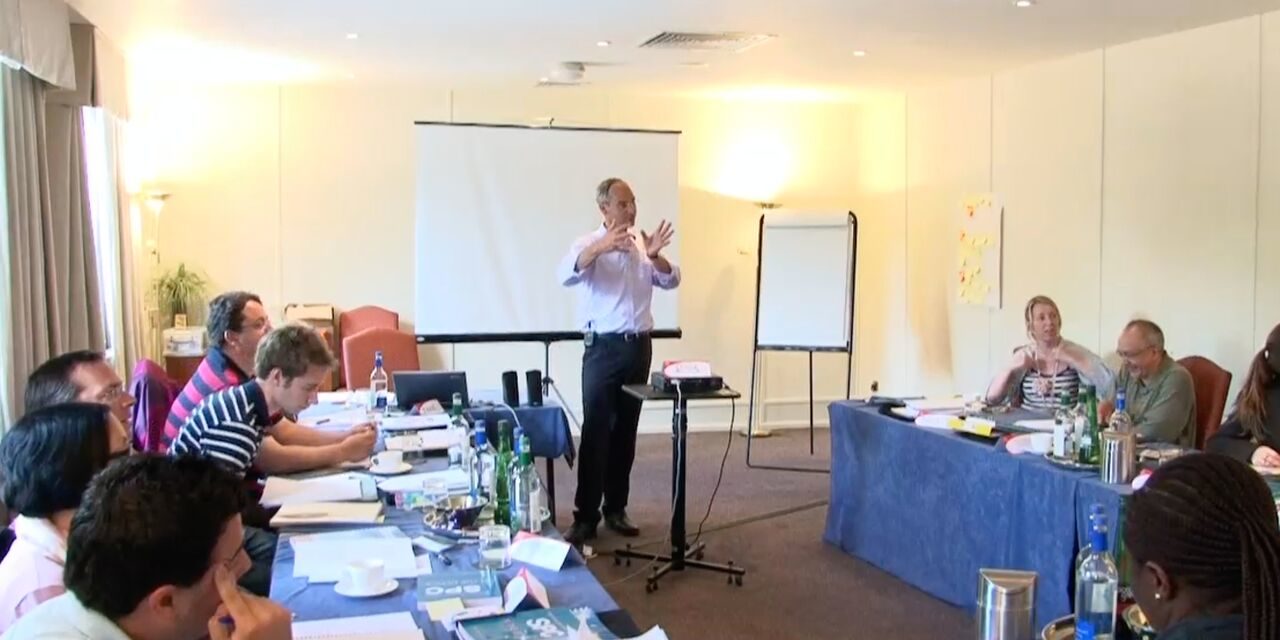Catalyst Consulting provides a guide to Everyday Operational Excellence, what it is and how to take the necessary steps to achieve it.
[box]This article has been published in Fresh Business Thinking, 7th June 2016, and can be found here.[/box]
All too often the discipline of business management is divided along the lines of binary decision making, advising practitioners to concentrate on long term investment, or short term improvement, cutting overheads or delivering excellence, driving up profit or laying the foundations for future success. Alongside this, the ‘wood for the trees’ paradigm is set out as the one which ought to be adhered to, involving an insistence that good management consists of lifting ones gaze from the shop floor, coal face or manufacturing plant and adopting a strategic view far removed from the day to day minutiae of actually delivering the goods or services your customers demand. It’s easy to see the appeal of both of these mind sets; either/or thinking simplifies complex processes and decisions down to 50/50 choices and creates a comforting sense of can-do decision making and forward momentum, whilst viewing management as a herculean task best performed from the loftiest of heights with steely gaze fixed on the far horizons is, let’s be honest, rather good for the ego.
The truth of the matter, however, is that successful management or team leading lies in recognising the fact that cutting overheads and delivering excellence, for example, aren’t competing aims if done correctly, but are rather overlapping components of a larger overall plan. Rather than having to choose between ostensibly contrasting targets, a truly excellent management system revolves around setting in place the structures required to deliver both, whilst recognising that apparently opposing aims are in fact simply complimentary parts of the same virtuous circle. Similarly, excellent management consists of being able to blend the strategic and long term with the process-based and transactional, via systems which work around a simple principle; doing a thousand tiny things better means being able to do the single most important thing better, and that most important thing is the one part of the equation which never varies – delivering excellence to your customers.
Everyday Operational Excellence is the embodiment of this way of thinking, a working method which applies the principles of Lean Six Sigma thinking to every level of a business in an attempt to ensure that each individual process, and then each part of that process, has been streamlined, modified and customised to achieve optimum results, that waste has been removed and that the focus is on the methodology of the way the work is delivered. It should be noted that Everyday Operational Excellence is a way of thinking and working rather than a defined and achievable target, since the only true target is to always be improving. The difference between this and other aspirational business and/or training programmes, however, is the practical, hands on and ‘doable’ nature of the techniques involved. By involving every member of your team through every strata of the company you’ll be able to unleash the creativity, experience and innovation which may have been going untapped, at the same time as shifting the culture from one in which problems are spotted and solutions offered, to one in which problems are prevented in the first place because the systems utilised are part of a constant programme of revision, improvement and evolution. Rather than saying ‘If it ain’t broke, don’t fix it’ Everyday Operational Excellence recognises that it may not be broke, but it could still be working better.
The first step toward Everyday Operational Excellence involves making sure that every individual person in your business feels genuine ownership of the process. This is only possible if you both share your own ideals of what you want to achieve and ask for the input of others. Set out the target of excellence for every customer and make sure that every person in the business has either a grasp of just how they can set about achieving this, or a set of tools able to interrogate their processes and uncover the correct answers. By laying out the ‘What?’ and the ‘Why?’ of customer satisfaction, you encourage those under you to search for, and share, the ‘How?’ Don’t make the mistake of thinking, or encouraging others to think, that ‘efficiency’ in this context necessarily means doing things quickly or more cheaply. This may sometimes be the case but often, ‘efficiency’ as measured via the matrix of customer satisfaction can mean the exact opposite. A company selling luxury goods, for example, may benefit from spending more rather than less on packaging, whilst a restaurant which rushes diners through a three course meal in under 45 minutes may increase through-put temporarily, but is unlikely to secure much in the way of customer satisfaction and with it loyalty and word of mouth recommendations.
The basic building blocks of the systems you put in place are the metrics used to measure what you define as success. Although statistics can be and are manipulated to mean different things to different people, numbers and other facts which are collected and interpreted honestly will always paint a true picture. Make sure that the process of deciding which metrics to measure is as organic and dynamic as the actual process of collecting these metrics, since the constantly evolving nature of any business, particularly one which is striving for Everyday Operational Excellence, will mean that the figures which represent ‘success’ tend to shift as processes become more streamlined and expectation rises.
Once the target of Everyday Operational Excellence has been prioritised and the message spread throughout the business, the emphasis should be placed on being, simultaneously, a manager overseeing the delivery of the processes and part of the team engaged in the actual day to day work required to move towards excellence. You need to be able to see the wood for the trees and to know where each individual tree is located and which is doing the job it was meant to do in a manner that will improve customer satisfaction. By engaging your entire team in the process, identifying and collecting the relevant metrics and basing everything around a constant and evolving programme of change, improvement, the removal of waste and the streamlining of operations, you’ll effect a basic alteration in the core culture of your business, and create a situation in which your delivery of excellence to your customers is no longer Everyday or Excellent, it’s Everyday and Excellent.









